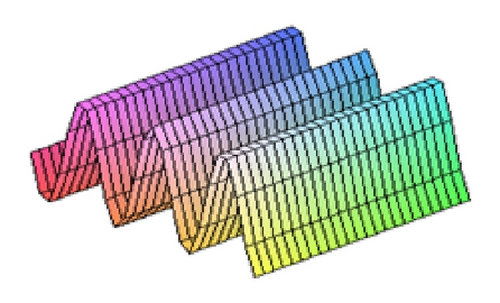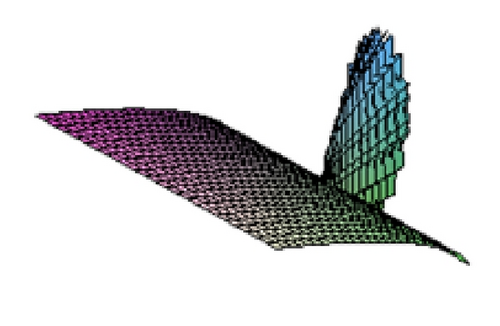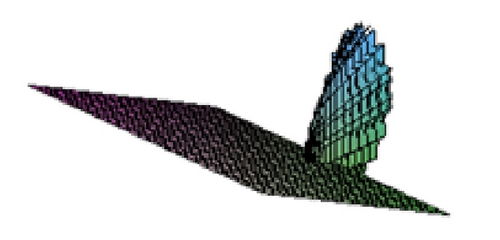Numerical Solution for Complex Systems of Fractional Order
Abstract
By using a complex transform, we impose a system of fractional order in the sense of Riemann-Liouville fractional operators. The analytic solution for this system is discussed. Here, we introduce a method of homotopy perturbation to obtain the approximate solutions. Moreover, applications are illustrated.
1. Introduction
Fractional models have been studied by many researchers to sufficiently describe the operation of variety of computational, physical, and biological processes and systems. Accordingly, considerable attention has been paid to the solution of fractional differential equations, integral equations, and fractional partial differential equations of physical phenomena. Most of these fractional differential equations have analytic solutions, approximation, and numerical techniques [1–3]. Numerical and analytical methods have included finite difference methods such as Adomian decomposition method, variational iteration method, homotopy perturbation method, and homotopy analysis method [4–7].
The idea of the fractional calculus (i.e., calculus of integrals and derivatives of any arbitrary real or complex order) was planted over 300 years ago. Abel in 1823 investigated the generalized tautochrone problem and for the first time applied fractional calculus techniques in a physical problem. Later Liouville applied fractional calculus to problems in potential theory. Since that time the fractional calculus has drawn the attention of many researchers in all areas of sciences (see [8–10]).
One of the most frequently used tools in the theory of fractional calculus is furnished by the Riemann-Liouville operators. It possesses advantages of fast convergence, higher stability, and higher accuracy to derive different types of numerical algorithms. In this paper, we will deal with scalar linear time-space fractional differential equations. The time is taken in sense of the Riemann-Liouville fractional operators. Also, This type of differential equation arises in many interesting applications. For example, the Fokker-Planck partial differential equation, bond pricing equations, and the Black-Scholes equations are in this class of differential equations (partial and fractional).
In [11], the author used complex transform to obtain a system of fractional order (nonhomogeneous) keeping the equivalency properties. By employing the homotopy perturbation method, the analytic solution is presented for coupled system of fractional order. Furthermore, applications are imposed such as wave equations of fractional order.
2. Fractional Calculus
This section concerns with some preliminaries and notations regarding the fractional calculus.
Definition 2.1. The fractional (arbitrary) order integral of the function f of order α > 0 is defined by
Definition 2.2. The fractional (arbitrary) order derivative of the function f of order 0 ≤ α < 1 is defined by
Definition 2.4. The Caputo fractional derivative of order μ > 0 is defined, for a smooth function f(t) by
Note that there is a relationship between Riemann-Liouville differential operator and the Caputo operator
The above equation involves well-known time fractional diffusion equations.
3. Complex Transforms
4. Numerical Solution
Theorem 4.1. Consider the fractional differential system (3.6) subject to the initial conditions
The homotopy perturbation technique implies that the initial value problem ((3.6)–(4.9)) can be expressed as a nonlinear integral equation of the form (4.8).
We proceed to prove the analytical convergence of our solution.
Theorem 4.2. Suppose the sequence of the homotopy series and is defined for p ∈ [0,1]. Assume the initial approximation inside the domain of the solution . If ∥un+1∥≤ρ∥un∥ for all n, where 0 < ρ < 1, then the solution is absolutely convergent when p = 1.
Proof. Let Cn(t, z) be the sequence of partial sum of the homotopy series. Our aim is to show that Cn(t, z) is a Cauchy sequence. Consider
Recently the homotopy methods are used to obtain approximate analytic solutions of the time-fractional nonlinear equation and time-space-fractional nonlinear equation (see [12–17]).
5. Applications
6. Conclusion
We suggested two types of complex transforms for systems of fractional differential equations. We concluded that the complex fractional differential equations can be transformed into coupled and uncoupled system of homogeneous and nonhomogeneous types. Moreover, we employed the homotopy perturbation scheme for solving the nonlinear complex fractional differential systems. The convergence of the method is discussed in a domain that contains the initial solution. The Schrödinger equation is illustrated as an application. This type of equation is used in the quantum mechanics, which describes how the quantum state of a physical system changes with time. In the standard quantum mechanics, the wave function is the most complete explanation that can be specified to a physical system. Solutions of the Schrdinger’s equation describe not only molecular, atomic, and subatomic systems, but also macroscopic systems (see Figure 1).










